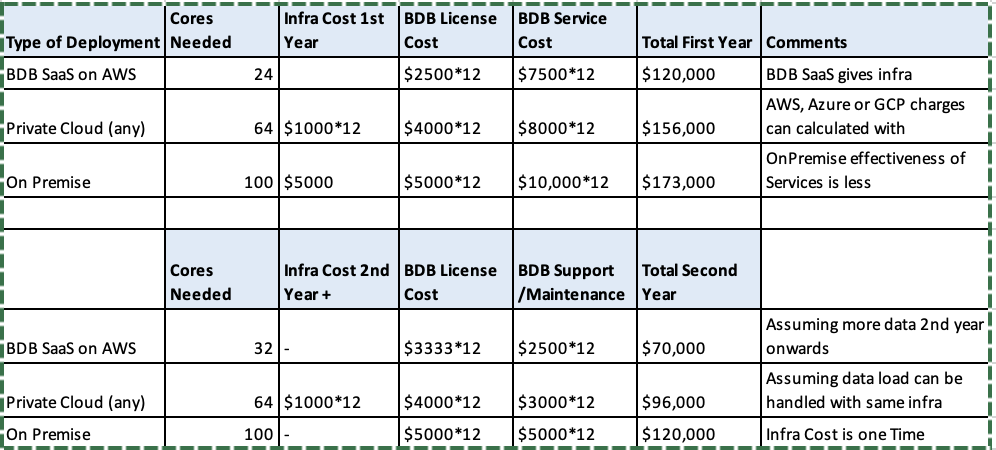Crafting a Compact CDP: A Quantitative Look at Utilising the BDB Platform
As outlined in my previous post, let's explore a straightforward use case: constructing a Customer Data Analytics framework based on a daily data volume of 60 million online transactions, equivalent to processing 10 GB of data each day for a USA Customer. The data originates from several applications, as illustrated in the accompanying diagram. For this case, we'll assume a scenario that requires basic data cleansing, with two zones within the data lake sufficing.
The objective is to perform elementary analytics tasks—such as clustering, forecasting, and classification—on this data lake. This will be coupled with straightforward self-service visualisation and dashboarding tools for a user group of 20-30 within the organisation. We aim to determine the three-year Total Cost of Ownership for utilising BDB across three different platforms: SaaS, Private Cloud, and On-premises.
In terms of solutioning efforts, we anticipate the need for a team comprising a Data Architect, Data Scientists, Data Engineers, Data Analysts, a Project Manager, and DevOps Engineers. This team will work over a span of one year to operationalise the platform within a Customer Data Platform (CDP). For quicker logical results, a larger team could be deployed, enabling customers to expect some level of analytics in production after just 13 weeks and keep on adding more data sources.
Let's examine the costs associated with implementing this scenario using the BDB Platform.
Pricing Details of this solution in different options
This means that the TCO is less than the cost of an Engineer in US. And 3 Year TCO is in the range of 250k USD on BDB SaaS.
A question that often arises is: How have we calculated the resource effort? Unlike the typical monthly billing cycle, we charge only for the actual hours worked. I estimate a combined effort of 200 hours per month across all the aforementioned roles. Businesses should shift from resource-based billing to real-time billing, which can significantly reduce the time spent on decision-making, granting access, and provisioning infrastructure. Companies like BDB, managing hundreds of projects simultaneously, can deploy engineers more efficiently to ensure delivery.
Perhaps my approach may seem unconventional to some, but effective implementation through a robust platform is entirely feasible.
Additionally, if customers wish to integrate notifications, alerts, and workflows into the BDB platform, this can be accommodated. The number of users will not significantly impact the cost; however, the use of additional computing cores will. I have provided a cost range, so you can now proceed with your calculations. Having spent 22 years in BI space, I am aware TCO of various solutions and failures of projects motivated BDB to spend 10 years in building this all integrated platform.
BDB SaaS is giving you an option to create POCs/MVPs for Enterprise Customers by Anonymising data & creating the value in 4-13 weeks depending upon the complexity. Then BDB can be deployed On-Premises for Production.
Please read my earlier article to understand BDBs value add for Enterprise. The link is provided in the comments.
For more details look at https://bdb.ai/saas
For further queries either write to me or contact Sales@bdb.ai
#TCO #dataanalytics #CDP #BDBPlatform #BDB #SaaS #BDBSaaS
Crafting a Compact CDP



